High Yields Beget High Volatility With No 'Powell Put' in Bonds
This article by Brian Chappatta and Liz Capo McCormick for Bloomberg may be of interest to subscribers. Here is a section:
One worrisome thing for bond investors that’s contributing to volatility is the unknown: new Federal Reserve Chairman Jerome Powell. For years after the financial crisis, they could count on Ben S. Bernanke and Janet Yellen to essentially limit how far prices can fall in financial markets -- colloquially referred to as a “put,” after the option. In other words, the bet was that central bankers would add stimulus or, in recent years, halt their tightening path on signs of unusual turbulence.
Judging by remarks this week from policy makers, who were unmoved by rising yields and the losses in stocks, the Powell Fed isn’t rushing to signal that tendency. New York Fed President William Dudley on Thursday called the stock selloff “small potatoes” and said it has no economic implications.
“The market has been kind of having a panic attack -- we really haven’t heard from Powell and it would help if he made some soothing comments,” said Ed Yardeni, president of Yardeni Research. “I don’t think he wants to establish right away that he wants a ‘Powell put’ the way we had a ‘Greenspan put’ and a ‘Bernanke put.”’
The market peaked in August of 1987 around the same time as Alan Greenspan took office. Following Black Monday, in October of that year he stated the Fed would provide whatever liquidity was required and over the course of the next few months proceeded to bailout Long-term Capital Management. Thus, the Greenspan put was born and the market proceeded to rally for the next 12 years.
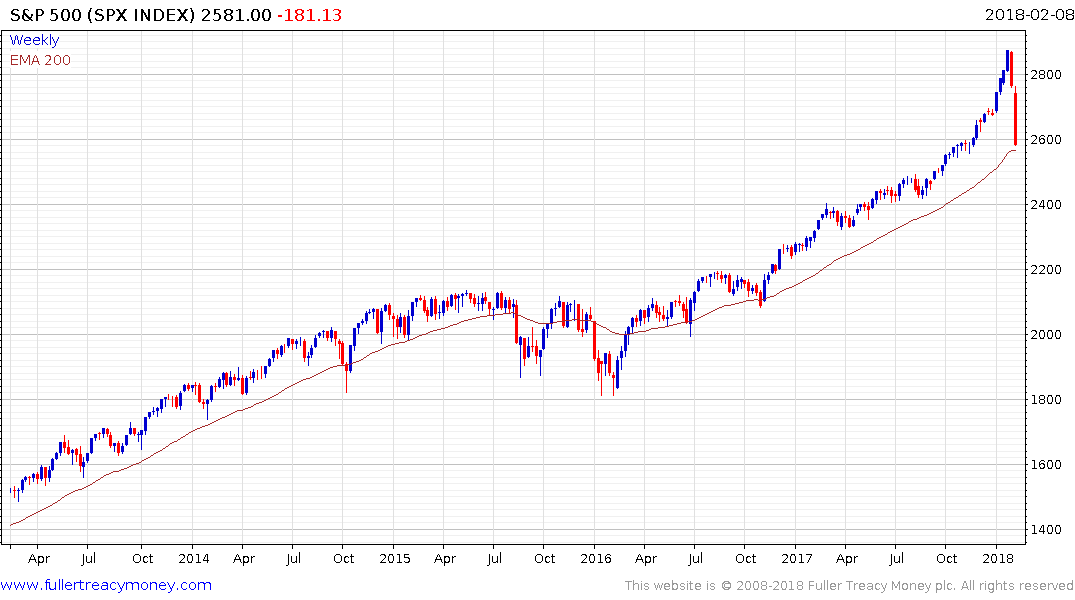
Jay Powell would be crazy to come to the market’s rescue one week into his tenure. That does not mean the Fed has changed its ways. The market continues to play an important role in how they calculate the effectiveness of their monetary operations. However, it is simply too early to act. The S&P500 hasn’t even unwound its overextension relative to the trend mean yet while large cap technology shares like Amazon, Nvidia, Boeing etc. still have very wide overextensions relative to the trend mean.
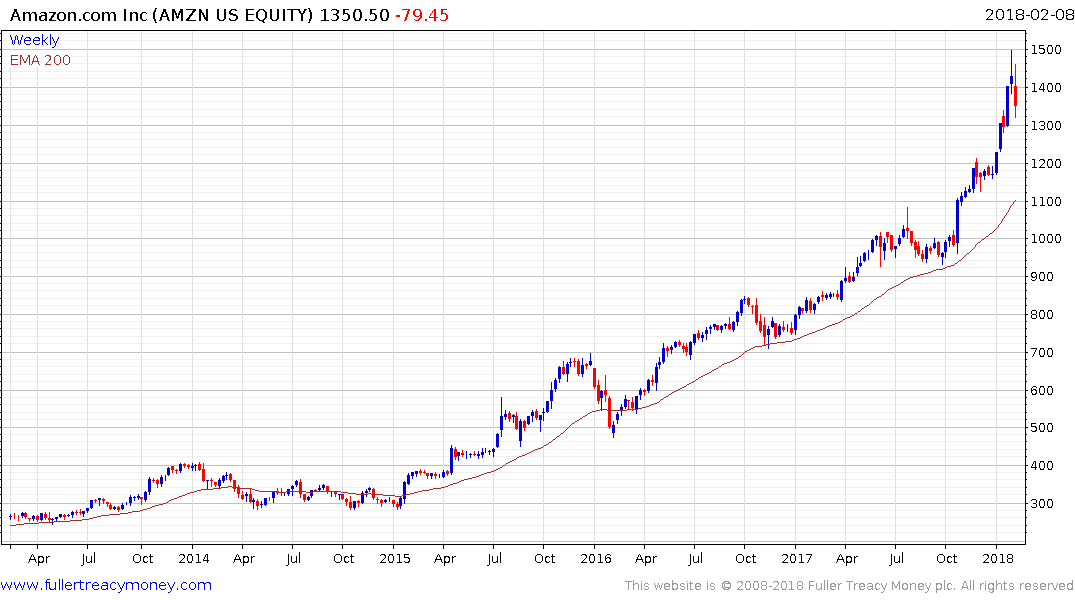
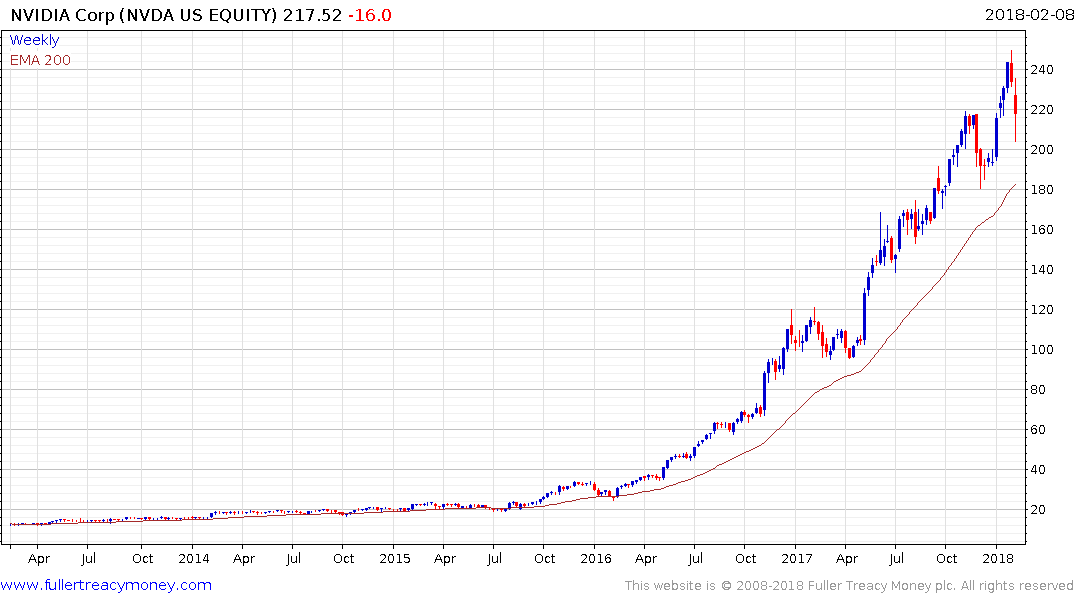
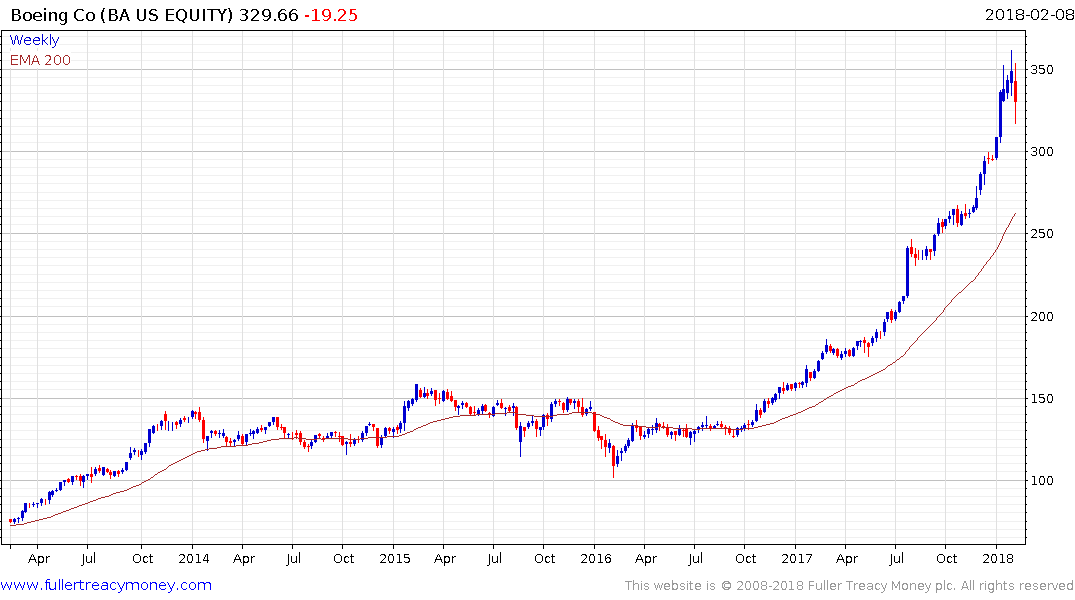
In the meantime, the Fed continues on its gradual path of reducing the size of its balance sheet while simultaneously raising interest rates. When this policy was announced back in September I expressed skepticism at how successful it would be and we are now seeing the results at exactly the time when the Treasury is expecting to issue more bonds.
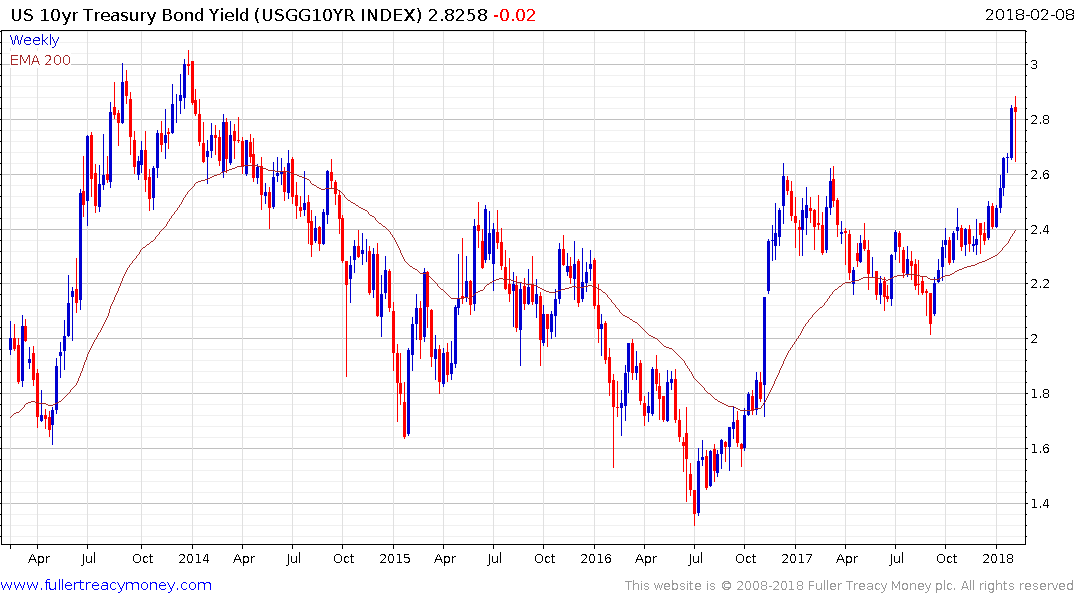
10-year Treasury yields are within 16 basis points of the psychological 3% while a good many global stock markets are now testing their respective trend means. It’s a reasonable assumption that if yield fails to surmount 3% stock markets will rally but the opposite also holds true.


